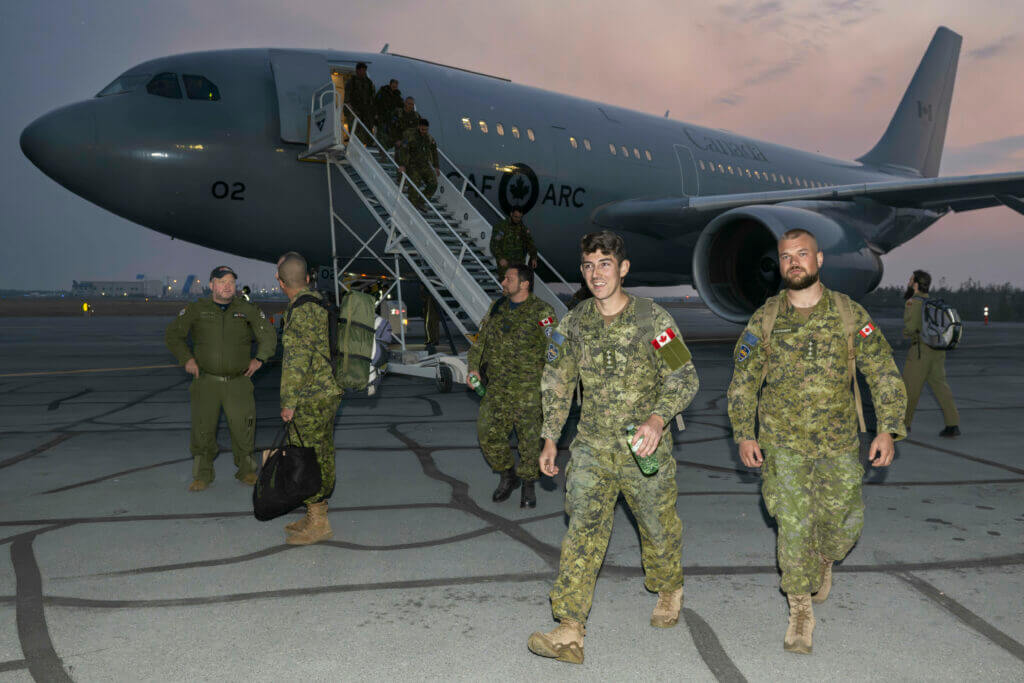Estimated reading time 7 minutes, 22 seconds.

As wildfires continue to burn out of control in the Northwest Territories (NWT) of Canada, Municipal and Community Affairs Minister Shane Thompson declared a Territorial State of Emergency on Aug. 15 to allow the government “to acquire and deploy the necessary resources” to manage the fires and protect residents.
Some of those resources include Royal Canadian Air Force (RCAF) aircraft, as well as Canadian Armed Forces (CAF) personnel, who began collaborating with the Government of the Northwest Territories (GNWT) on Aug. 13 to determine how best to assist with response efforts.
The government requested assistance from the CAF for a period of two weeks, beginning on Aug. 15, which may be extended if necessary. The request was approved by Canada’s new defence minister Bill Blair.
As of the morning of Aug. 21, there were 236 active fires across the NWT, with a total of 270 fires this year. Those wildfires have been responsible for burning 2.2 million hectares year to date.
“We find ourselves in a crisis situation, and our government is using every tool available to assist,” said Thompson in a press release.
In an email to Skies, a Department of National Defence (DND) spokesperson said roughly 120 CAF personnel arrived in Yellowknife from 2nd Canadian Division on the evening of Aug. 14, ready to assist with wildfire management efforts.
About 100 of those members began working under the direction of GNWT Wildfire Management to aid in Type III firefighting roles on the ground, such as fire turnover, mop up, and hotspot dowsing. The remainder began working “either in a planning and coordination function with Territorial officials, or supporting efforts of their personnel,” the DND spokesperson said.
Additionally, seven RCAF aircraft — both fixed- and rotary-wing — are supporting mobility and logistical tasks, as well as emergency evacuations. According to the DND, one CC-138 Twin Otter and two CH-146 Griffon helicopters are supporting firefighting operations in the Yellowknife area. Moreover, two CC-130J Hercules, one CC-177 Globemaster, and one CC-150 Polaris are supporting evacuation flights from Yellowknife to Edmonton and Calgary, Alberta.
Two additional CC-130H Hercules aircraft were used to airlift a total of 100 residents from Hay River and Fort Smith, NWT, to Fort McMurray, Alberta, on the morning of Aug. 14.
The GNWT has also been coordinating evacuation flights from Yellowknife via commercial aircraft.
A CC-130J Hercules conducted an evacuation flight on the evening of Aug. 17, transporting 79 passengers to Edmonton. The following day, a CC-177 evacuated 36 passengers (plus some medical staff from Yellowknife) to Vancouver, with three more passengers dropped off in Edmonton with the remainder of the Yellowknife medical staff. Moreover, a CC-130J evacuated a total of 40 passengers — 25 of whom were dropped off in Edmonton, and 15 in Calgary, the DND said.
On Aug. 20, additional Canadian Army personnel were deployed to Hay River to assist the roughly 120 troops already in the territory. The DND said there are now approximately 350 CAF members deployed in support of the GNWT’s request for assistance.
The troops will focus mainly on the continued building of firebreaks around Hay River and Yellowknife to slow or stop the spread of surrounding wildfires.
“As the situation develops, we will scale and adjust as necessary to provide the best support to the NWT,” DND said.
View the current wildfire situation across Canada here.